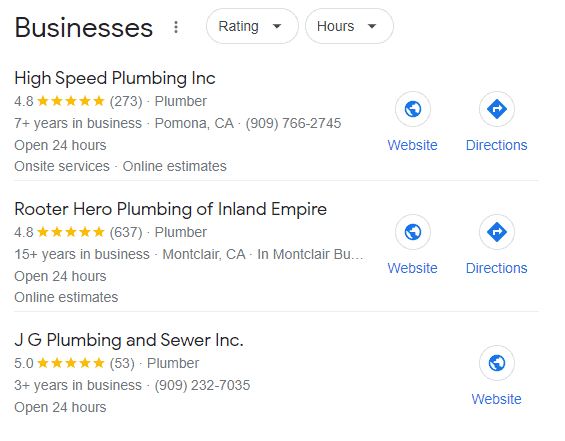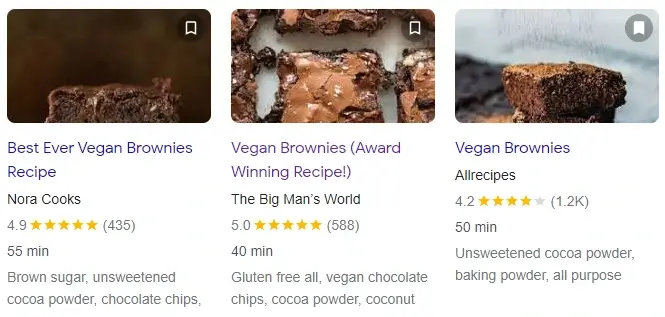Dude, Where’s My Traffic? SEO Boot Camp for Small Business

The internet holds trillions of web pages. A typical keyword search returns millions of results.
Welcome to the World Wide Web — a crowded open market where customers flock to the loudest barker on the block.
You may struggle to get noticed. How do you rise above the hue and cry of so many small business sites offering pretty much the same thing?
If You Build It, They’ll Ignore It
Most small business websites see fewer than 16 daily visits. That’s not enough to justify the long hours and thousands of dollars sometimes invested in them. Only about 15% of all websites get 200 daily visits or more.
This hard fact of life on the internet seems almost counterintuitive; after all, with millions of internet users conducting billions of searches every day, there should be plenty of traffic to go around, right?
Wrong. The truth is, a relative handful of websites get the lion’s share of all that search traffic.
You’ve seen them: national chains, Yelp, Angi, Home Depot — those apex predators always seem to beat you to the kill. And then there’s Bob’s Friendly Plumbing across town. You may have to contend with Bob, too, because he hired a marketing firm that did a first-rate job on his website. Bob will get to the carcass left by the predators before you.
- 46% of all searches have local intent.
- 21% of consumers use the internet every day to find a local business.
- 76% of consumers look at a website or other online presence (Yelp? Google Maps?) before physically visiting a business.
If you’re a plumber, electrician, or fence builder, customers will find you by searching online — unless they stumbled onto your $10,000-a-month billboard and happen to remember the phone number.
So, what’s a small business to do short of shelling out megabucks for Google Ads?
1. Focus on Your Local Search Presence
Most business people, and even some SEOs, fail to realize that local search and organic search are separate entities. Google draws its rank from different things.
- For organic search: You should optimize your website and also engage in off-site SEO (social marketing, inbound link building). It takes time to build an organic search presence, and it may be several months before you see an appreciable difference.
- For local search: You should claim, verify, and optimize your Google Business Profile (GBP), formerly Google My Business. The results can be almost immediate. The phone calls may pick up within a couple of weeks.
We’ve already written a blog on local vs. organic search and how to optimize for both, so if you’d like to know more, we invite you to read that post.
The good news about a claimed and verified GBP profile, beyond the fact that it can yield fast and dramatic results, is that:
- A Google Business Profile is free.
- GBP controls your search visibility in the local 3-pack.
- GBP relies heavily on your reputation and Google reviews for rank. So if you maintain good relationships with your customers, and those customers thank you by posting glowing reviews, you’re almost a shoo-in to perform well in local search results and Google Maps
Search results in the local 3-pack pull their information from your Google Places for Business profile.
2. Ask Your Customers to Leave Reviews
Yelp takes a dim view of any attempt to game their rating system, including requests for customer reviews. But Google lets you request reviews, as long as you don’t purchase or offer discounts for them.
Beyond your localization signals, your reputation, determined by the quality and quantity of customer reviews on Google, determines how much traction you’ll get in local search. We’ve seen negative reviews reduce customer leads from GBP by 40% or more for several weeks. And while occasional negative reviews aren’t the end of the world, if they take your rating from 4.8 to 2.2, that’s a big deal.
A high review count will buffer your business against occasional negative reviews. Again, it pays to stay on the best possible terms with customers.
3. Respond to All Customer Reviews
According to a BrightLocal consumer survey, “89% of consumers are ‘highly’ or ‘fairly’ likely to use a business that responds to all of its online reviews. 57% say they would be ‘not very’ or ‘not at all’ likely to use a business that doesn’t respond to reviews at all.”
Which reviews should you respond to? As many as possible on Yelp and all reviews on your GBP listing. Thank your customers for posting positive reviews, and try to resolve any problems that lead to negative reviews.
A high response rate shows that you’re engaged. Customers and Googlebot will take notice.
4. Use Your Expertise to Promote Your Business
Local service businesses serve a niche. Angi and Home Depot have a broader audience, and while this may seem like a disadvantage, in some ways, it isn’t. For instance, can the national chains write about the latest local water ordinances and how new plumbing technology can benefit customers during a drought?
The local newspaper may publish a brief article, but does it offer enough detail? Consider your customer’s pain points. Can they find the right information online?
Blogging and social marketing let you promote your brand and provide helpful information to customers. They can also drive traffic to your site! But the information you post has to be thorough and show more than superficial knowledge of the subject.
If you hire a marketing firm to do your blogging, be sure they understand your business and don’t outsource their writing or entrust it to interns. Content must show quality, expertise, and usefulness to rank well in Google’s Brave New World of SEO. No SEO spam.
5. Clean Up Your NAP & Citations
NAP stands for name, address, and phone number.
A citation is simply a listing of your site on the internet. It could be a listing in an online plumbing directory, Apple Maps, Facebook, or the Yellow Pages.
It’s good to have lots of citations on reputable sites, especially when they link to your site. It’s not good when your business name, address, and phone number are inconsistent across those citations.
Google crawls the internet for information about your business, not just your website and Google Business Profile.
Consistent information creates a clear signal about your business hours, location, phone number, and so on. Inconsistent information creates confusion and will make it harder for your site to rank in local searches.
If you don’t know how to find and update your citations, hire an agency to do it for you.
6. Add Local Schema to Your Local Business Site
Schema is a kind of structured data added to the code of a web page. It helps search engines understand a page and make it eligible for rich results. Huh? What does all this mean to a lay person?
Rich results are snippets that enhance a search listing and make it stand out. Recipe sites are the schema masters, and in the examples below, the recipe name, reviews, cooking time, and other callouts have been marked up with schema.
“How does this apply to a plumbing business?” you may wonder.
LocalBusiness is a schema type to call out and amplify location signals like your service area, phone number, map coordinates, etc. If you run a WordPress site, several good plugins simply the process of adding schema of all types, including LocalBusiness schema.
Review ratings, cooking time, recipe names, etc. are pulled from schema markup. This helps the listings stand out.
7. Upgrade & Expand Your Website
You can’t buy a first-rate small business website for $2,000, $3,000, or even $5,000 in 2022. And this has nothing to do with the quality of the design. It has more to do with the way the site is coded and the depth and breadth of information on it.
Your website may sit on a bed of bad code, be over five years old and poorly maintained, or be lacking in every aspect, including SEO, coding, design, and UX (user experience). If you’re raising your hand in the back of the room — “Yes, you’re describing my small business website” — it’s time to rip off the Band-Aid and build a new site from scratch.
Hire a reputable agency that will give you your money’s worth and partner with you for the long haul. It’s not enough to launch a spanking new optimized website; you’ll have to maintain it with regular updates and continue to build and manage the content (copy) on it.
This means creating new content for your customers, taking down or consolidating old or poorly performing content, and gradually transforming your site into a force to be reckoned with.
Or, if your site is already in reasonably good shape, start developing new content for it ASAP, or you may end up with the best local service site no one has ever heard of.
A 12-page site won’t drive much traffic. But just by adding a couple of quality, optimized pages a month, in a year, you’ll have increased the content to a point where you should see an appreciable improvement in traffic.
8. Enhance Your Site’s Service Area Information
Many local business sites do an indifferent job of defining their service area. This is a mistake because confused prospects don’t convert to paying customers. Plus, if prospects are confused, there’s a possibility Google may be confused, too.
Delineate your service area with a service map (Google lets you create them for free) and a representative list of cities you serve. If you’re willing to go the extra mile, build a detail page for each city you serve to attract incremental traffic and boost local relevance signals.
Resources & Further Reading
- What creators should know about Google’s helpful content update (Google Search Central)
- 11 Best Schema Markup Plugins For WordPress (Astra)
- Local SEO Schema: A Complete Guide To Local Markup & Rich Results (Search Engine Journal)
- Local Consumer Review Survey 2022 (BrightLocal)
- Local vs. Organic SEO: Where to Spend Your Marketing Dollars (Culture Cube)
- Small Business SEO 101: Why Your Local Site Gets No Traffic (Culture Cube)
- Why “Free” Organic Traffic Is Never Truly Free (Culture Cube)

Peter Losh is the SEO Director of Culture Cube Marketing in Upland, California. He's also a de facto UX designer, site builder, and content creator. Unlike most folks in the SEO biz, he works directly on the sites he optimizes, having witnessed the effects of recommendations that go ignored or misunderstood (in previous gigs).
Peter has worked on websites since the salad days of the internet, first as a graphic artist and web designer at the Centers for Disease Control. Then came several years of freelance web development, SEO and e-commerce management for business sites of various sizes, and ultimately a 10-year stint as the sole SEO Manager of PartyCity.com.
In his spare time, he enjoys classic film, classical music, and classic comebacks. And cats.
Professional Work Experience
- Search engine optimization
- Ecommerce management
- Conversion rate optimization
- UX design and analysis
- Copywriting and training
- E-mail campaign design
- Web design and development
- Graphic design

